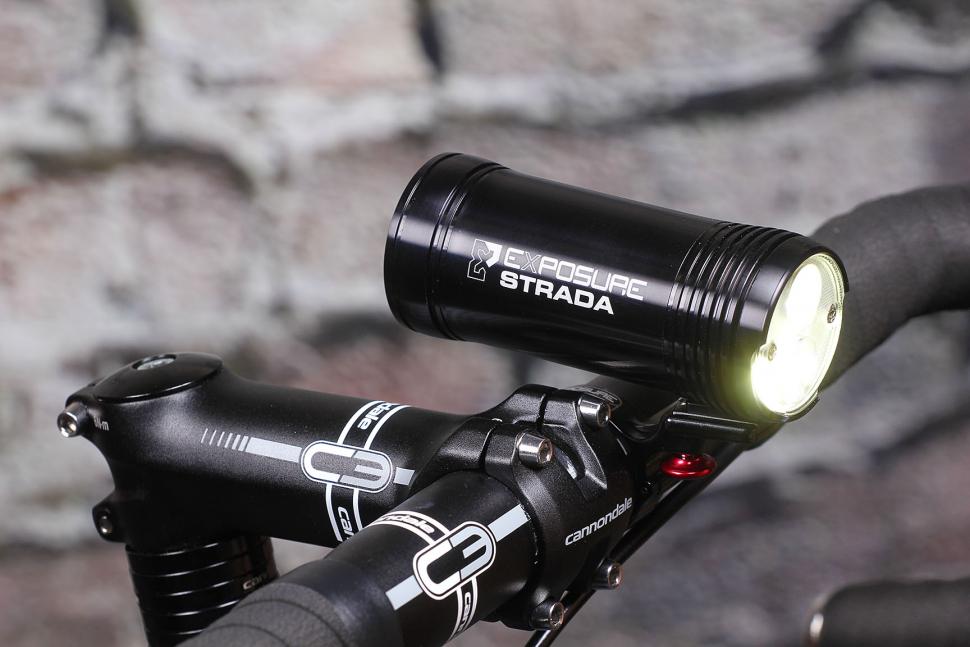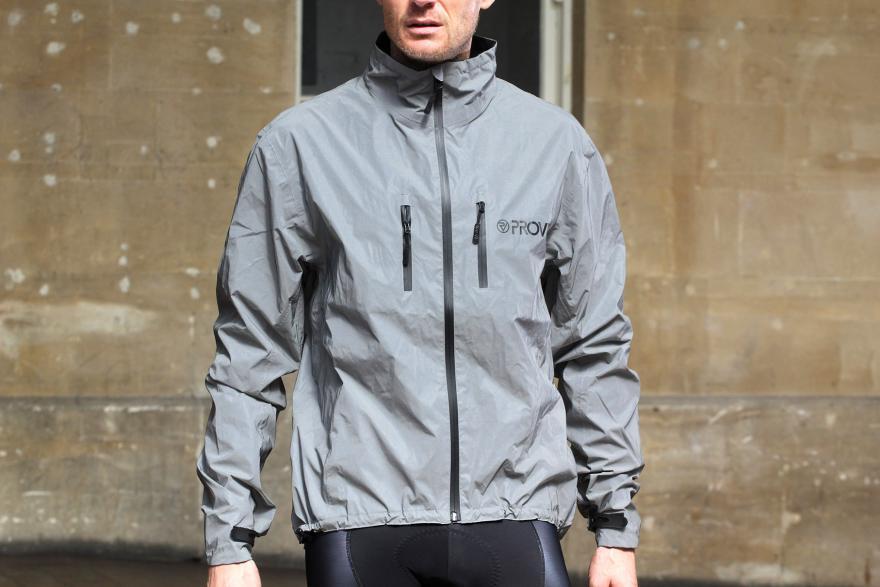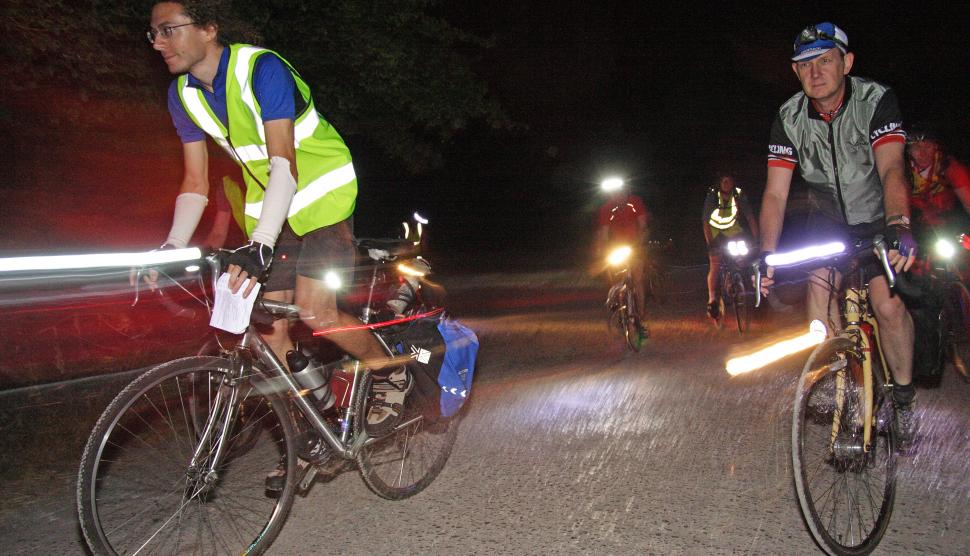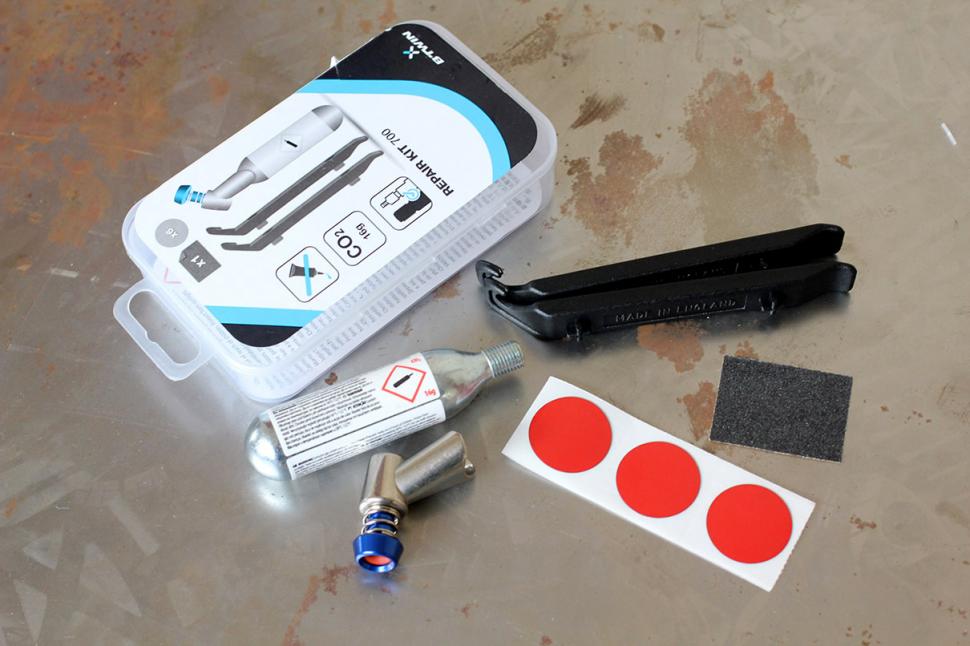- News
- Reviews
- Bikes
- Accessories
- Accessories - misc
- Computer mounts
- Bags
- Bar ends
- Bike bags & cases
- Bottle cages
- Bottles
- Cameras
- Car racks
- Child seats
- Computers
- Glasses
- GPS units
- Helmets
- Lights - front
- Lights - rear
- Lights - sets
- Locks
- Mirrors
- Mudguards
- Racks
- Pumps & CO2 inflators
- Puncture kits
- Reflectives
- Smart watches
- Stands and racks
- Trailers
- Clothing
- Components
- Bar tape & grips
- Bottom brackets
- Brake & gear cables
- Brake & STI levers
- Brake pads & spares
- Brakes
- Cassettes & freewheels
- Chains
- Chainsets & chainrings
- Derailleurs - front
- Derailleurs - rear
- Forks
- Gear levers & shifters
- Groupsets
- Handlebars & extensions
- Headsets
- Hubs
- Inner tubes
- Pedals
- Quick releases & skewers
- Saddles
- Seatposts
- Stems
- Wheels
- Tyres
- Health, fitness and nutrition
- Tools and workshop
- Miscellaneous
- Buyers Guides
- Features
- Forum
- Recommends
- Podcast
 Six tips for cycling at night Sept 2018
Six tips for cycling at night Sept 20186 tips for cycling at night - don't let the dark stop you riding
There’s no reason to stop riding your bike just because the sun has set. With some good quality lights and the right attitude, you can extend your riding time, and riding outdoors, even in the dark, sure beats riding on a stationary trainer staring at the wall or television.
Cycling under a full moon on a clear and crisp evening is an exhilarating experience, so here are six tips for embracing the darkness.
1. Lights. You’re obviously going to need some good lights, and fortunately, these days you can get some very bright and long-lasting lights for not a lot of money. LED technology has transformed cycle lights - it’s a far cry from the days of the Eveready bike lights.
- Your guide to the best front lights for cycling + beam comparison engine
If you’re venturing out into unlit country lanes, you need a front light bright enough to illuminate your path and reveal potholes and other hidden dangers. The rear light wants to be bright and the run time for both lights needs to exceed the duration of your planned ride. It’s sensible to carry a couple of small backup lights just in case your rear light inexplicably fails. Better to be safe than sorry. Clearly, make sure the runtime of you lights exceeds the length of your planned ride.
- Winter cycling: 16 tips to keep you motivated
2. Reflectives. While lights are obviously critical for riding at night, don’t discount the value of reflective clothing. The choices for reflective clothing has gotten much better in the past couple of years, with the likes of the Sugoi Zap and Proviz Reflect 360 offering full 360-degree reflectivity.
Research a few years ago showed that the up-and-down motion from pedalling can catch the eye of the motorist more than a large reflective stripe across the back, so think about reflective pedals, overshoes or ankle bands to help you stand out as well. Also, consider adding some reflective tape to your bike can be a good measure too - I have some on my mudguards for added visibility.
- Buyer's guide: the best reflective cycling clothing & accessories
3. Plan your route. Depending on what you want to get out of your ride, whether it’s a structured training session or just a case of getting the miles in, planning ahead and having a route in your head or on a computer can be a useful aid.
Riding at night probably isn’t the time to do a long steady 3-hour ride, so save that for the weekend and instead think about a short and focused session for a really effective 1-hour ride. Pick a short loop with a hill that you can ride repeatedly to provide some structure to your riding, and riding a short route close to home is ideal in case anything happens. It’s also worth picking the roads carefully, and avoiding poorly surfaced roads and any that are likely to have lots of potholes.
4. Ride with a partner or group. Riding with a friend or a group is a good way to approach night rides. Having a regular with a club or group of friends is a good way to provide the incentive and motivation you might need to head out into the dark. There is also the safety in numbers and more help at hand in case of a mechanical issues.
- Survival tips for cycling in the rain
5. Be prepared for mechanicals. Fixing a mechanical in the dark isn’t much fun, so the first step before every night ride is to ensure your bike is in tip-top mechanical order, to minimise the risk of something failing when you’re far from home.
Make sure to carry enough tools to fix most likely mechanical failures, from spare inner tubes to a well stocked multi-tool with a chain breaker. I carry the same spare kit as I would for a day ride, so that’s two spare inner tubes, a tyre boot, reliable pump and good multi-tool. Don’t forget the mobile phone in case the worst happens and you need to phone home. I always make sure to give the bike a quick visual once-over before a night ride, ensuring the tyres and brakes are in good conditions to hopefully spot any issues in advance.
6. Enjoy it. Don't forget to enjoy riding at night. Yes, it’s easy to be intimidated by the darkness, and the first time you set off from the comfort of a warm house out into the darkness for a 2-hour solo ride can be a strange and daunting experience. Riding at night is invigorating though and there’s less to distract you, and often, depending on routes, the roads can be much quieter once the rush of motorists to get home has died down. And hearing strange sounds over your shoulder can sure make you ride a bit faster too…
Riding at night will help you retain the fitness you gained over the summer and while other people are watching television, you can be smug in the knowledge that you can eat that second mince pie guilt-free.
Do you regularly ride at night? Any tips to add?
David worked on the road.cc tech team from 2012-2020. Previously he was editor of Bikemagic.com and before that staff writer at RCUK. He's a seasoned cyclist of all disciplines, from road to mountain biking, touring to cyclo-cross, he only wishes he had time to ride them all. He's mildly competitive, though he'll never admit it, and is a frequent road racer but is too lazy to do really well. He currently resides in the Cotswolds, and you can now find him over on his own YouTube channel David Arthur - Just Ride Bikes.
Latest Comments
- Dogless 38 min 24 sec ago
You're defending bombing hospitals and refugee camps and starving children.
- Simon E 47 min 41 sec ago
Red lights are frustrating but you either obey the rules or you don't. Like drivers (sorry!), you shouldn't pick and choose the rules you wish to...
- ktache 1 hour 10 min ago
Or any other item that has recently had 5p taken off it's tax.
- mattw 3 hours 18 min ago
Used car salesman is a complete attention-seeking plank....
- tubasti 3 hours 35 min ago
I don't know if they're any better, but they's certainly become more boring.
- FionaJJ 4 hours 1 min ago
At risk of being cynical, and stereotyping the police, it's so they don't have to leave the comfort of their panda cars and pursue on foot when...
- andystow 4 hours 11 min ago
But now you don't have to. Allegedly.
- Patrick9-32 4 hours 19 min ago
Since Kona's rebirth after they kept the stinky for waaaay too long they have been one of the most consistently desireable mountain bike brands. If...
- luk 4 hours 56 min ago
Device with built in battery?? Shocking!!




Add new comment
35 comments
Obvious, but I forgot to did it last year, only once, review your clothing. Always pack a gillet or jacket in readiness for the drop in temperature.
I agree with the year round thing and always have a good rear light (currently a See.Sense Icon). I think it says to drivers 'the cyclist in front of you KNOWS you can see him so don't be a pillock' and I'm pretty sure I get more passing space when people go around me (apart from the odd bellend but you'll never get rid of all of those unfortunately).
I ride with my front and rear lights opearting year round. During daylight hours, both lights are on flash mode. I believe those flashing lights saved me dozens of times during daylight hours, where I could see in the driver's eyes that the flashing lights caught their attention when they would not have otherwise noticed a bicyclist.
For night time riding, take into account your age, ambient street lighting, local terrain and quality of pavement in your area. Twenty-somethings can probably see reasonably well with a 400 lumen light under ideal conditions. If you are over age 45, I'd say you can get by with an 800 lumen light when streets are well lit, terrain is flat and the pavement is properly cared for. I'd bump that to 1600 lumens minimum for conditions that include downhill decents at speed, dark unlit conditions and more typical lousy pavement - with lots of trolly tracks, potholes, ruts and cracks, broken glass, shards of metal and other hazards.
Seems over the top to me - despite being 59, I can happily ride in Highland Scotland with an Ixon IQ Premium, which I suspect is about 250 lumens, but rather better distributed for road use than brighter offroad lights.
Seems like way overkill on brightness.
At 61 we ride relatively straight trails and paths and back roads at night with 250 lumens. Bump that to 500 for speed downhill. On roads we also have a companion flashing front along with our steady light.
Reflective ankle bands add biomotion recognition, especially at night. Other clothing reflector s can be a plus.
You do not want to blind others riding with you and lower light lumen levels allow you to also see your surroundings, not to mention greatly extending runtime if your light is capable of higher output. Save the 12-1600 lumens for technical mtn biking!
Pages